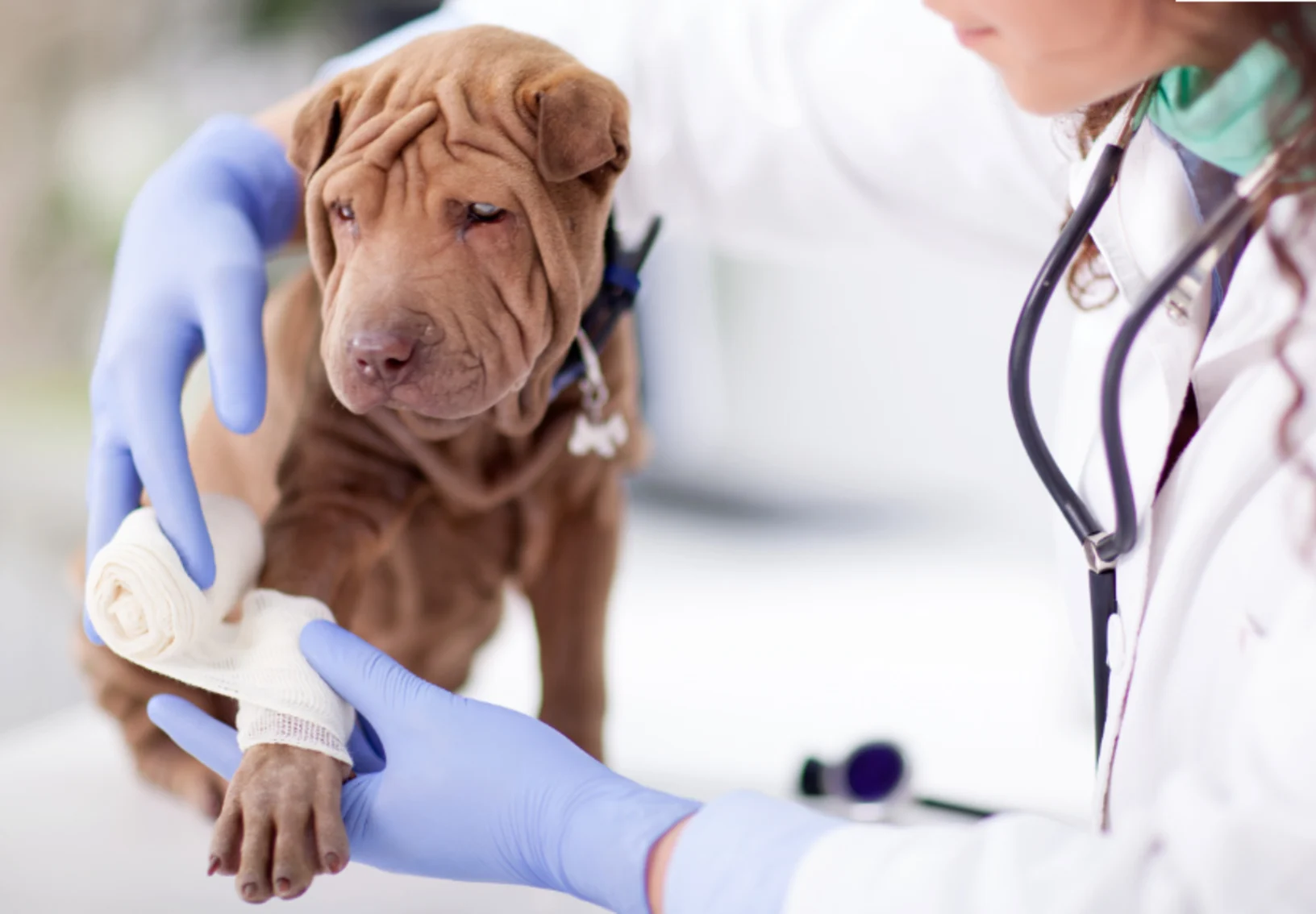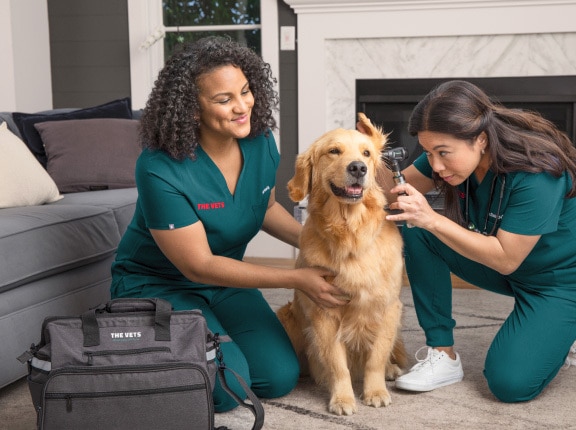Signs Your Dog Might Need canine tplo surgery: Vet-Approved Checklist
Why Pet Rehab Is Important: the Perks of Vet Providers for Your Pet's Healing
Animal rehab is a crucial part of recuperation for pet dogs encountering injuries or disabilities. Veterinary services provide critical assistance via customized rehab strategies that resolve individual requirements. These plans frequently include discomfort monitoring, physical treatment, and nutritional assistance. Comprehending the different facets of pet rehabilitation can illuminate its importance in improving healing results. What details benefits do these solutions supply, and just how can they change a pet dog's recovery journey?
Understanding Animal Rehab
Animal rehab encompasses a variety of restorative methods aimed at restoring the wellness and performance of injured or impaired animals. This field integrates different methods, consisting of physical therapy, hydrotherapy, and occupational treatment, tailored to satisfy the specific demands of each animal. Rehab professionals evaluate a pet's problem, developing customized therapy plans that might involve workouts to strengthen muscles, boost movement, and enhance overall well-being. The process not only focuses on physical recovery however likewise addresses psychological and behavior facets. Animals usually experience tension and stress and anxiety adhering to an injury, making psychological wellness factors to consider crucial in rehabilitation. By producing an encouraging environment, specialists can help animals restore their confidence and adapt to their brand-new situations. Through routine sessions, animals can experience substantial enhancements, ultimately causing a much better lifestyle. Generally, understanding pet rehabilitation highlights its value in advertising healing and boosting the bond in between animals and their owners.
The Role of Pain Monitoring in Healing
Exactly how vital works pain management in the recuperation of injured animals? It plays an essential function in facilitating healing and enhancing the general wellness of family pets. Correct discomfort administration not only alleviates discomfort but likewise promotes wheelchair, allowing pets to join recovery tasks essential for recovery. When discomfort is properly managed, pets have a tendency to react positively to treatment, resulting in quicker rehabilitation outcomes.Veterinarians use various methods to examine and deal with pain, consisting of medicines, acupuncture, and different therapies. By tailoring pain monitoring approaches to the individual demands of each pet, veterinarians can guarantee that pet dogs remain calm and cooperative throughout their recovery trip. Lessening discomfort aids lower stress, which can inhibit recovery and lengthen recovery times. To summarize, reliable discomfort management is essential for enhancing the recuperation process and boosting the quality of life for damaged pets.
Physical Therapy Strategies for Pet Dogs
Many physical therapy techniques are available to help in the rehab of pet dogs recuperating from injuries or surgical treatments (tplo surgery). These strategies can boost wheelchair, eliminate discomfort, and promote healing. Restorative exercises, for circumstances, assistance reinforce muscle mass and boost joint function, enabling pet dogs to regain their physical abilities slowly. Hand-operated therapy, which consists of massage and mobilization, can ease tension and enhance blood circulation, adding to a much faster recovery.Other methods such as easy series of activity workouts motivate joint versatility and reduce tightness. Additionally, electric excitement treatment may be employed to stimulate nerves and muscles, advertising healing and discomfort relief.Veterinary professionals commonly customize these techniques to every animal's specific needs, making sure a comprehensive rehabilitation plan. By implementing these physical treatment approaches, family pets can experience improved top quality of life and a much more successful healing from their conditions. The integration of these practices into rehabilitation programs is essential for perfect healing results
Benefits of Hydrotherapy for Recovery
Hydrotherapy uses considerable advantages in animal rehab, especially in boosting mobility. This water-based treatment promotes discomfort alleviation while offering convenience to wounded or recovering animals. Furthermore, it promotes strength-building exercises that contribute to total physical recuperation.
Improved Flexibility Improvement
As pets recoup from injuries or surgical procedures, enhanced flexibility frequently comes to be a key goal of their rehabilitation. Hydrotherapy offers as a valuable device in achieving this goal. Via water-based exercises, animals can take part in low-impact movements that facilitate joint movement and reinforce muscular tissues without the anxiety of weight-bearing activities. The buoyancy of water supports their bodies, enabling increased variety of motion and mobility enhancement. In addition, hydrotherapy encourages better equilibrium and control, which are necessary for restoring regular activity patterns. Routine sessions can cause substantial progress in a pet's physical capacities, eventually enhancing their lifestyle. This approach not only aids in healing but likewise advertises a more energetic and satisfying way of life post-rehabilitation.
Pain Relief and Convenience

Remedy for discomfort is a crucial facet of animal recovery, and hydrotherapy substantially adds to this procedure. By using water's buoyancy, hydrotherapy minimizes joint stress and eases pain during motion. This therapeutic strategy offers a comforting atmosphere where animals can engage in mild exercises without the complete weight of their bodies influencing their healing. The cozy water stimulates blood flow, advertising healing while additionally motivating relaxation. try these out Furthermore, hydrotherapy sessions can be customized to meet the particular requirements of the animal, guaranteeing perfect convenience. As pets experience decreased pain and enhanced comfort levels, their total willingness to join rehab tasks commonly improves, resulting in an extra efficient healing trip. Consequently, hydrotherapy functions as a critical tool in improving pain relief and comfort during rehab.
Stamina Building Workouts
Strength-building workouts play a necessary function in the rehabilitation process, with hydrotherapy offering distinct advantages. This kind of treatment uses water resistance to boost muscular tissue strength without placing too much pressure on the joints. The buoyancy of water supports the animal's weight, enabling more secure motion and raised array of movement. Additionally, hydrotherapy can improve cardio health and wellness and promote general physical fitness, assisting in much faster healing from injuries or surgeries. The regulated setting also decreases the risk of reinjury, making it an ideal alternative for pet dogs needing rehabilitation. Routine hydrotherapy sessions can cause recognizable improvements in movement, strength, and endurance, inevitably enhancing the family pet's lifestyle and capacity to return to regular tasks.
Value of Customized Rehabilitation Plans
Personalized rehabilitation strategies are necessary for dealing with the special demands of each animal, guaranteeing individualized therapy methods. These strategies enable effective development monitoring and required changes, promoting excellent healing results. Furthermore, a holistic approach can boost the total well-being of the pet, promoting a much more complete rehabilitation experience.
Individualized Therapy Approaches
While lots of rehab programs embrace a one-size-fits-all approach, the distinct needs of each pet require personalized treatment prepare for suitable recuperation. Personalized rehabilitation plans consider numerous factors, including the animal's types, age, case history, and certain injuries or conditions. By customizing interventions, vets can resolve each family pet's special challenges, taking full advantage of the effectiveness of the recovery procedure. Embellished plans may include different methods such as physical therapy, hydrotherapy, and therapeutic exercises, guaranteeing that the therapy lines up with the animal's capacities and progress. Additionally, personalized strategies foster a more powerful bond in between the pet dog and the caretaker, advertising a more engaging and encouraging recovery atmosphere. Ultimately, personalized therapy is important for achieving ideal feasible end results in pet rehabilitation.
Development Tracking and Adjustments

Holistic Recuperation Strategies
All natural recovery strategies are vital for effective animal rehab, as they emphasize the relevance of customized therapy strategies customized to every pet's certain requirements. This approach takes into consideration the physical, emotional, and environmental variables impacting recuperation. Custom-made rehabilitation plans might consist of a combination of physical therapy, nutritional counseling, and behavioral modifications. By dealing with these diverse elements, veterinarians can improve the general wellness of the pet and advertise a quicker healing. In addition, such customized strategies promote a much deeper understanding of the pet dog's special obstacles, resulting in a lot more reliable interventions. Eventually, holistic recuperation methods not just enhance physical health and wellness but additionally add to the animal's psychological and psychological security, guaranteeing an extensive rehabilitation experience.
The Influence of Nutrition on Recovery
Nourishment plays an essential duty in the recovery process for rehabilitating animals, commonly identifying the speed and efficiency of healing. A well-balanced diet supplies the needed nutrients that sustain cells repair work, increase the body immune system, and enhance total vigor. Protein is especially important, as it helps in muscle restoring and healing from injuries. Important fatty acids, vitamins, and minerals additionally add to decreasing inflammation and promoting ideal cellular function.Veterinarians often highlight the relevance of customized nourishment plans, thinking about each animal's certain needs, age, and health status. Appropriate hydration is equally crucial, as liquids assist in vitamins and mineral absorption and help in detoxification. By guaranteeing that pets get suitable nutrition, caregivers can substantially boost their possibilities of an effective healing, causing better long-lasting health and wellness outcomes. Ultimately, nutrition works as a fundamental element in the recovery journey, supporting pets in gaining back toughness and durability post-injury or health problem.
Success Stories: Pet Dogs That Grew After Recovery
Successful rehab tales are plentiful, showcasing the strength of family pets who have gotten over substantial difficulties. Take, for instance, Bella, a golden retriever that experienced severe injuries from an automobile mishap. With devoted veterinary care and a complete recovery program, she regained her wheelchair and returned to her spirited self, much to her owner's delight. Max, an elderly feline detected with joint inflammation, experienced exceptional improvement through a mix of physical treatment and discomfort management. His newly found dexterity enabled him to enjoy his favorite sunbathing spots again. One more inspiring instance is that of Coco, a saved greyhound who got over anxiety via therapy and socialization methods, enabling her to flourish in her new home. These success tales exemplify the transformative power of pet rehabilitation, emphasizing that with the right assistance, pet view website dogs can not only recover yet lead fulfilling lives, enhancing the bonds they show to their family members.
Often Asked Questions
How much time Does the Recovery Process Commonly Take for Animals?
The rehab procedure for animals commonly varies based on the injury or condition, ranging from a couple of weeks to a number of months. Specific progression, treatment kind, and commitment to workouts greatly influence the overall period of healing.
Are There Any Type Of Threats Related To Pet Rehabilitation?
Pet recovery may lug risks such as exacerbation of injuries, inappropriate strategies leading to discomfort, or inadequate monitoring throughout recovery. These variables can impede development and influence the general efficiency of the rehab process.

Can All Pets Gain From Recovery Services?
Not all animals may require rehab, but lots of can benefit substantially. Rehabilitation services can improve mobility, ease discomfort, and enhance general health, specifically for those recuperating from injuries, surgical procedures, or chronic conditions.
Just How Can I Prepare My Pet Dog for Rehabilitation Sessions?

What Indications Show My Animal Demands Rehab?
Signs suggesting a pet may require rehabilitation consist of trouble strolling, hopping, decreased activity degrees, reluctance to jump, or indications of discomfort. Observing these behaviors can trigger proprietors to look for specialist assessment and treatment for their animals.